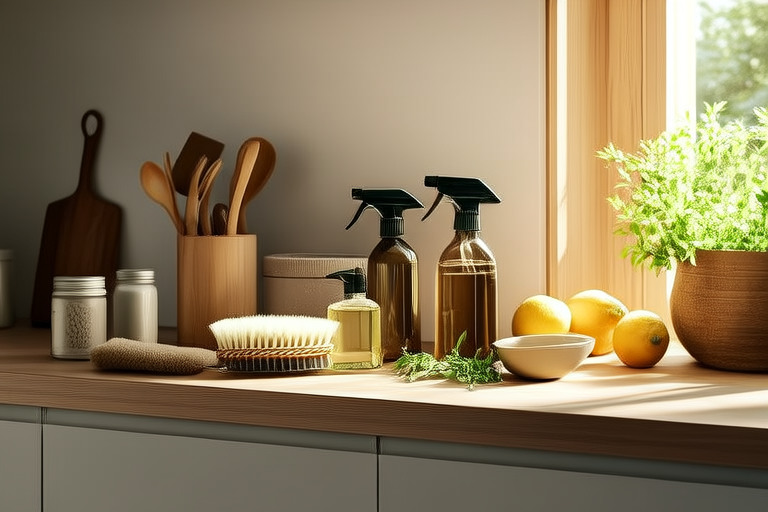Discover Non-Toxic, Eco-Friendly Cleaning Products That Actually Work
Introduction
In today’s world, the quest for sustainability and health is more important than ever. Many traditional cleaning products contain harsh chemicals that can be harmful to both the environment and our health. Fortunately, there is a growing range of non-toxic, eco-friendly cleaning products that not only get the job done but also promote a healthier home environment. This article will guide you through the benefits of using these products, how to choose them wisely, and practical tips for integrating them into your daily routine.
Understanding Non-Toxic, Eco-Friendly Cleaning Products
What Makes a Product Non-Toxic and Eco-Friendly?
Non-toxic and eco-friendly cleaning products are formulated without harsh chemicals like phosphates, ammonia, and chlorine. These substances can irritate the skin and eyes, pollute waterways, and contribute to air pollution. Instead, eco-friendly cleaners use natural ingredients such as vinegar, baking soda, and essential oils, which are biodegradable and less harmful to the environment.
The Environmental Impact of Traditional Cleaners
Traditional cleaning products often come in plastic packaging that contributes to landfill waste. Moreover, their chemical components can contaminate water systems and harm aquatic life. By switching to eco-friendly alternatives, you can significantly reduce your carbon footprint and help protect the planet.
How to Choose the Right Non-Toxic Cleaners
Reading Labels Carefully
When shopping for eco-friendly cleaners, always read the labels carefully. Look for certifications such as EcoLogo, Green Seal, or USDA Organic. These certifications ensure that the product meets strict environmental standards. Additionally, check for terms like “biodegradable,” “non-toxic,” and “plant-based.”
Considering Concentrated Formulas
Concentrated cleaning products require less packaging and transportation, making them more environmentally friendly. They also tend to be more cost-effective in the long run. Simply dilute the concentrate with water at home to achieve the desired strength.
Evaluating Product Performance
While it’s important to prioritize eco-friendliness, the product should still perform well. Test a small area first to ensure it effectively removes dirt and grime. Look for reviews from other users who have tried the product in similar conditions to gauge its effectiveness.
Practical Tips for Using Eco-Friendly Cleaners
DIY Cleaning Solutions
Creating your own cleaning solutions at home is a great way to control what goes into your cleaning products. Here are a few simple recipes:
- All-Purpose Cleaner: Mix equal parts water and white vinegar with a few drops of lemon essential oil.
- Glass Cleaner: Combine 2 cups of water, 1/4 cup rubbing alcohol, and 1 tablespoon white vinegar.
- Bathroom Cleaner: Use baking soda and vinegar to tackle tough stains.
Storage and Disposal
Store your eco-friendly cleaners in reusable containers to minimize waste. When disposing of old products, follow local guidelines for hazardous waste disposal to prevent contamination.
Real-Life Applications and Case Studies
Case Study: Green Cleaning in Schools
Many schools have successfully transitioned to green cleaning practices. For instance, the Chicago Public Schools implemented an eco-friendly cleaning program that reduced costs and improved indoor air quality. Teachers and staff reported fewer instances of respiratory issues, demonstrating the positive impact on health.
Home Application: Weekly Cleaning Routine
Here’s a sample weekly cleaning routine using eco-friendly products:
- Monday: Dust surfaces with a microfiber cloth dipped in water.
- Tuesday: Mop floors with a mixture of water and vinegar.
- Wednesday: Clean the bathroom with baking soda and vinegar.
- Thursday: Vacuum carpets and upholstery.
- Friday: Wash windows with a glass cleaner made from water, alcohol, and vinegar.
Conclusion
Switching to non-toxic, eco-friendly cleaning products is a step towards a healthier and more sustainable lifestyle. By choosing products wisely and adopting practical cleaning habits, you can create a cleaner home while minimizing your environmental impact. Start by trying out some DIY solutions and gradually incorporate certified eco-friendly products into your routine. Remember, every small change counts towards a bigger difference.
Actionable Steps:
- Research: Look for eco-friendly cleaning products with certifications like EcoLogo or Green Seal.
- Experiment: Try DIY cleaning solutions to see what works best for your needs.
- Adopt: Integrate these products into your regular cleaning routine and observe the benefits.
